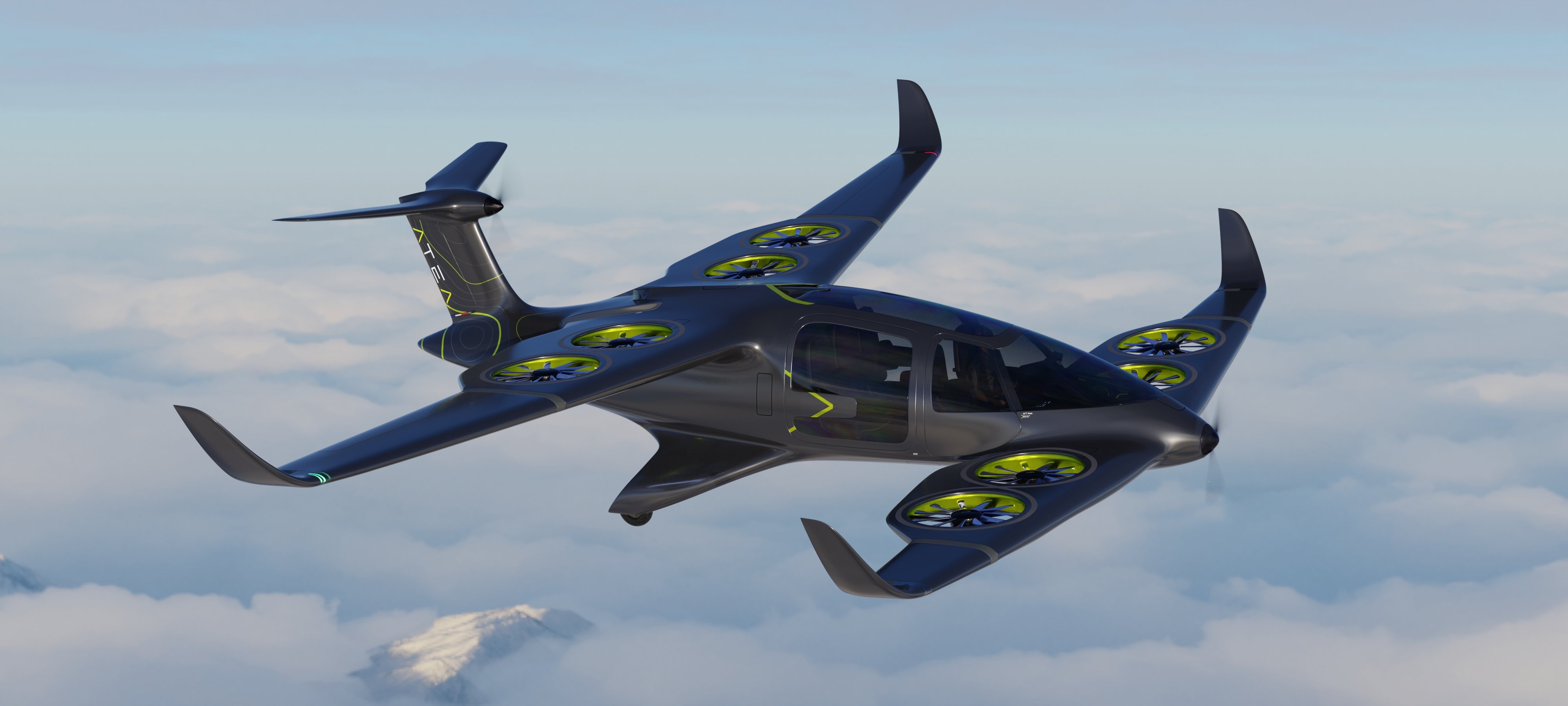Click Here to View This Page on Production Frontend
Click Here to Export Node Content
Click Here to View Printer-Friendly Version (Raw Backend)
Note: front-end display has links to styled print versions.
Content Node ID: 419320
Ascendance Flight Technologies this week unveiled a significantly revised design for the Atea hybrid-electric VTOL aircraft that it aims to certify by 2025. The French start-up has spent the past three years detailing plans for the five-seat, lift-and cruise model, which is is expected to deliver a range of 250 miles and speeds of 124 mph.
Digital images released on December 1 show eight ducted fans for vertical lift, with four installed in the main wing and four more in a new large canard, as well a single horizontal propeller at the top of the tail section and another in the nose of the aircraft. An earlier design, released by the Toulouse-based company in February, had just a pair of ducted fans for vertical lift in the inner-wing section and a single three-bladed propeller in the nose.
According to Ascendance, the additional fans increase the power available during takeoff and landing and add redundancy and improve manoeuvrability in the event of one or more fans shutting down in flight. The company told FutureFlight that it also believes the new design will be easier to certify under EASA's Part 23 special conditions rules.
By moving the main wing toward the rear of the airframe, the Ascendance engineering team has improved access to the four-passenger cabin, which now features large "skyview" windows. The Atea has retractable main and nose landing gear.
“We set up Ascendance Flight Technologies with a very clear vision of what we wanted to achieve: to accelerate transition towards green aviation thanks to hybrid technology,” said co-founder and CEO Jean-Christophe Lambert. “The design of Atea is the concrete reflection of our values, our experience, and our know-how. The aircraft we are presenting today is the result of huge efforts by our research and development department, tests and trials on four prototypes, and a great deal of thought on costs and the ease of flying such an aircraft.”
In September, the company raised €10 million ($11.7 million) to support the development of the Atea. It expects to be ready to start flight testing a production-conforming prototype in 2023.
The Atea is to be powered by Ascendance’s proprietary Sterna hybrid-electric powertrain. The company says that Sterna’s modular design and “embedded intelligence” will allow it to support various energy sources, including sustainable aviation fuel or hydrogen.
The Atea will use electrical power for takeoff and landing, with a turbine engine powering the cruise phase of flight when less power is needed. This approach is mainly motivated by the desire to reduce noise and emissions.
The company’s founders previously worked on Airbus’s now- suspended E-Fan electric light aircraft program. Its board of directors was recently bolstered with the appointment of several senior executives from the aerospace and automotive sectors, including former Safran chairman Jean-Paul Herteman and former Renault executive committee member Jean-Christophe Kugler. Also on the board is Agnes Plagneux-Bertrand, who was head of the E-Fan program.
